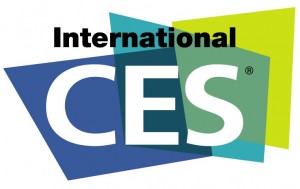Every day I watched the news reports and press releases from the just-ended 2011 Consumer Electronics Show hoping for some interesting radio news. Instead, what we got was mostly more of the same. You might call it CES 2010 2.0. Aside from the Android-powered car radio that Matthew covered the other day, there was nothing new or innovative offered up in the radio world.
Even though the company never updated its website from the 2010 CES, iBuiquity did announce that HD Radio would be standard in 36 car models from 17 brands, which does indicate some stability for the technology. But as far as satellite radio is concerned XM/Sirius only had one announcement on hand, touting a deal with Nissan offering a a three-month intro subscription on dealer-certified pre-owned Nissan and Infiniti cars.
Internet radio primarily built on the smartphone integration model introduced by Pioneer at last year’s CES. Toyota jumped into that fray with its Entune system offering control of not just Pandora, but also Clear Channel’s iheartradio, XM satellite radio and HD Radio. However, this system is just an option on “select vehicles,” which means that in reality only a minority of Toyota buyers will end up with it. Sony and other after-market mobile stereo manufacturers also announced smartphone-connected head units that will control Pandora and other apps.
What we haven’t seen yet is a car stereo with native internet radio capability built-in. While smartphone sales are growing I still doubt that the majority of owners are willing to deal with the hassle of connecting their phones most of the time in order to take advantage of internet radio access. Furthermore, this functionality is mostly offered on optional equipment or after-market items, further limiting the number of car owners likely to use it.
I don’t see mobile internet radio reaching any kind of critical mass–even on par with Sirius/XM–until the experience is completely integrated. That will likely require manufacturers to pair up with mobile broadband carriers similar to how Sirius/XM struck deals with them. But I don’t think such an idea is farfetched, noting how Amazon bundles AT&T 3G service with its Kindle e-readers. Still, it hasn’t happened.
Although the car has always been an important place for radio listening, more than ever it is now the battleground for radio technologies. Major electronics manufacturers seem to be largely ceding the home HD, satellite and internet radio market to niche players.
New radio platforms will succeed or fail in the car based upon their ability to offer a seamless, integrated experience with desirable programming. Sirius/XM has the leg up here with 20 millions subscribers and established relationships with most major auto manufacturers. HD Radio’s principal advantage is that it’s free, but it’s also hampered by far less diverse programming, even taking into account HD2 and HD3 channels. HD also has all sorts of reception problems outside of the strongest signal areas.
Internet radio poses the greatest threat to HD and satellite, but not as long as people have to plug in their smartphones to tune it in.
In the end, I think the dirty little secret is that when it comes to radio in the car, traditional analog broadcast still wins. It’s standard equipment on pretty much every vehicle sold and it’s a feature in pretty much every aftermarket stereo, alongside CD, MP3, satellite, HD or smartphone connectivity. Broadcast is also free, and while we can find many faults with mainstream commercial programming, there is still plenty that attracts millions of listeners every day.
This is not the sort of conclusion that makes news at the Consumer Electronics Show. But that doesn’t make it any less true.




